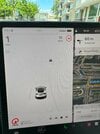This.
Lots of comments here about the stated range not matching up to what Tesla claims. It's never going to match up. I'm not even sure how that estimated range on the screen is calculated (though I'm sure there are those here who do know), because often it won't really match up with the predicted range when using the trip planner. Switch to battery percentage and don't worry about it anymore.
Maybe in the future when there are many more fast chargers people won't care about the stated range of an EV anymore? Maybe it would be better if we just switched to watts per mile and then you could figure out a rough range off of the usable battery size? (77kw battery, 270w/mile = 285 miles or about 200 miles from 10-80%.) My minivan can barely make 300 miles on a gas tank but I'm more concerned about my mpg rather than the actual range of it, because there are gas stations everywhere.
I've had so many conversations with people where they're like "how far can it go between charges?" And the answer is always "it depends." No one asks how far your car can go between fill ups. Sorry, getting off topic here.
No, you are pretty well on topic. There isn't a really exact answer. Some of the comments about letting the BMS do some research, a couple of Full to Empty cycles, yada, yada...
I'm reminded of he kid's question "How high is the sky?" or Bill Cosby's question, "Why is there air?".
My 2022 M3LR said about 335 miles when I found it at my curb. It now seems to top out somewhere around 320. I knew from experience by Buick LeSabre would make almost 400 miles on a full tank most times. Winter, Summer, tire condition, etc all would affect it , same as in a Tesla. If that suddenly dropped, I knew I had an isssue, like the time my injector rail screwed up and I was running rich.
If you charge to 85% on a regular basis, note the mileage. Check it from time to time. Load it up to 100% once in a while. If you see a marked change, say 20 miles difference or more indicated on a full can all of a sudden, then put in a service ticket. They'll run remote diags and advise you.
I charge one car on 110V any time it is parked. The other one on a 40 Amp Wall Adapter, as I am on call. The Blue Bunny, a March 2020 M3SR+ indicates 222mi on a full can. I'm happy with that. The Good Ship Venus, a Nov 2021 M3LRAWD shows 333 on a full can.
Is the software right? Am I being made sport of? Who knows. I do know I can go about 275 miles on a trip before my micturition warning light is enabled. But at my age, that's about it. So once in a while I look at the current mileage then the percentage. Divide the mileage by the percentage and see if it matches what I see if I fill 'er up. Costs me about 5-6 cents a mile. Happy as a poule d'eau in a canary's cage, to quote the late Cajun Pete.



